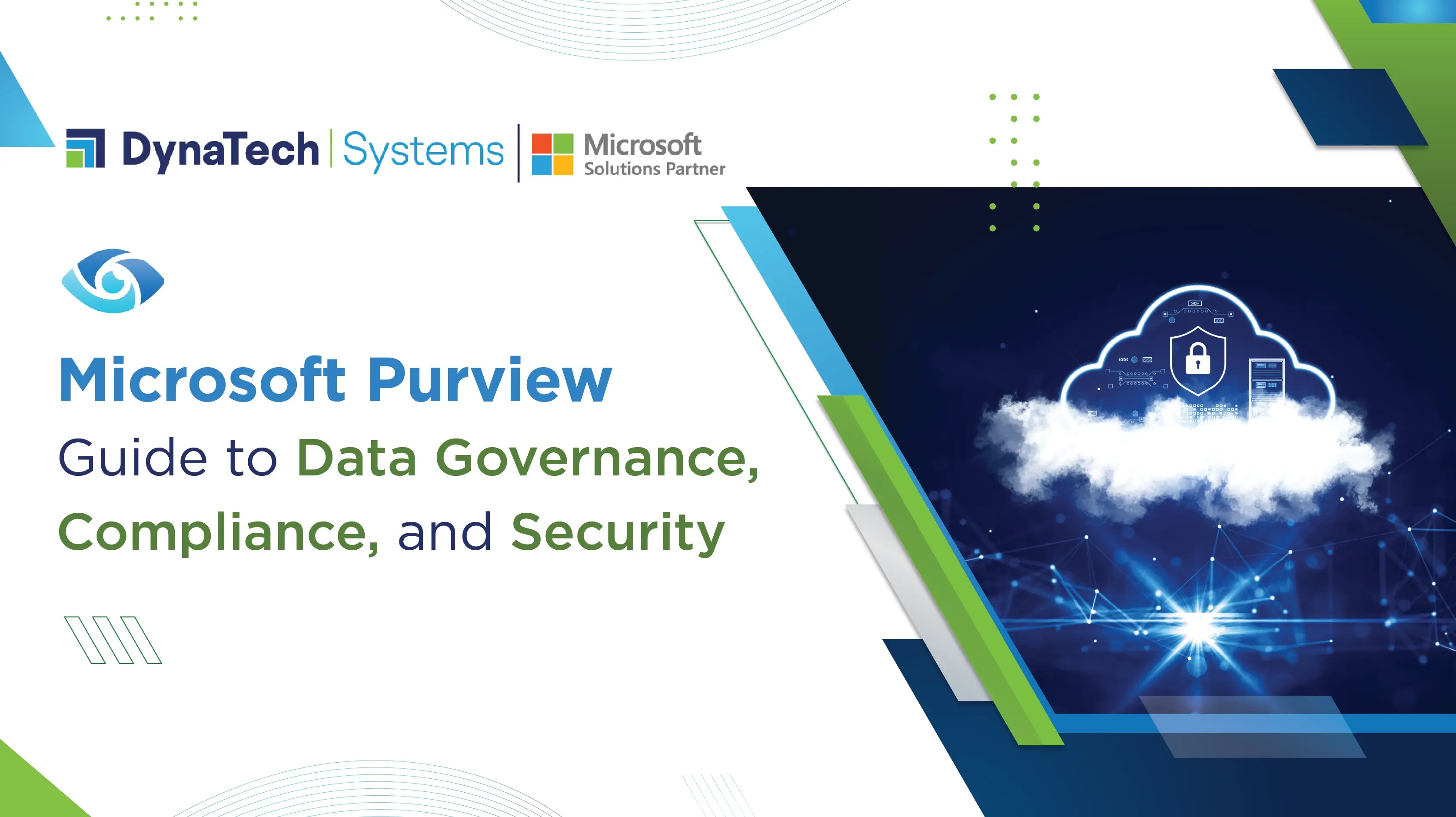Keeping track of data across different platforms—on-premises, cloud, and SaaS applications—can feel like a never-ending struggle. One moment, you're ensuring security and compliance; the next, you're scrambling to find the right data when you need it most.
Microsoft Purview makes this easier. It brings everything—governance, security, and compliance—under one roof, so you don’t have to juggle multiple tools or worry about hidden risks.
If managing your organization’s data feels overwhelming, you’re not alone. But the right approach can make all the difference.
Microsoft Purview: Cutting Through the Data Chaos
Data today is like a wildfire—spreading across cloud platforms, on-premises servers, and third-party applications faster than most organizations can manage. Keeping it secure, organized, and compliant isn’t just difficult—it’s a constant uphill battle. That’s exactly why Microsoft Purview exists. It doesn’t just help businesses "manage" data; it tames the chaos, offering deep visibility, ironclad security, and a compliance framework that actually makes sense.
The Big Problems Microsoft Purview Solves
- A Data Free-for-All – Information is scattered across different environments, making oversight a nightmare.
- The Compliance Tightrope – Navigating regulations like GDPR, HIPAA, CCPA, and ISO 27001 without a solid framework is a risky.
- Security Black Holes – Gaps in protection leave organizations vulnerable to breaches, insider threats, and unauthorized access.
- Blind Spots in Data – Without proper classification and metadata management, businesses are sitting on gold mines of data they can’t even use.
Rather than cobbling together different solutions, Microsoft Purview consolidates governance, security, and compliance into one intelligent system, giving businesses the control and clarity they need.

Source: Microsoft
Microsoft Purview Core Capabilities
1. Data Governance and Discovery
Purview Data Map
- Automated data discovery using AI-powered scanning across Azure, SQL Server, AWS S3, Power BI, and more.
- Metadata cataloging and lineage tracking to understand data relationships.
- Searchable data assets to improve accessibility and data democratization.
Purview Data Catalog
- Centralized repository for storing metadata and data asset classifications.
- Enables self-service data discovery for business users and analysts.
- Integration with Azure Synapse Analytics for improved insights.
2. Data Security and Protection
Data Loss Prevention (DLP)
- Prevents unauthorized sharing of sensitive data across Microsoft 365, Teams, SharePoint, Exchange, and third-party apps.
- Supports custom policies to detect and block financial, health, or PII data leaks.
Information Protection
- Classifies and labels sensitive information using AI-powered scanning.
- Enforces encryption policies to protect confidential data at rest and in transit.
- Enables end-to-end data protection across cloud and on-premises systems.
Insider Risk Management
- Detects potential malicious or unintentional insider threats.
- Uses AI and behavioral analytics to identify risky user activities.
- Enables administrators to take proactive security measures before incidents occur.
3. Compliance and Risk Management
Microsoft Purview Compliance Manager
- Provides a risk-based compliance score to measure regulatory adherence.
- Automates policy enforcement for GDPR, HIPAA, NIST, ISO 27001, PCI DSS, and more.
eDiscovery and Audit
- Enables legal teams to search, preserve, and export electronic evidence for litigation and regulatory investigations.
- Advanced audit logs help track user activities, file access, and security incidents.
Communication Compliance
- Monitors emails, Microsoft Teams, and third-party messages for policy violations.
- Helps detect harassment, insider trading risks, and data exfiltration attempts.
4. Data Lifecycle Management
- Automates data retention, archiving, and deletion policies.
- Ensures compliance with global data residency laws and data minimization principles.
- Reduces storage costs by optimizing data retention periods.
Benefits of Microsoft Purview
- Know Your Data, Inside and Out – If you don’t know where your data is or who’s using it, you’re flying blind. Purview lays it all out—where your data lives, how it flows, and who has access—so you’re always in control.
- Stop Problems Before They Start – Data leaks, insider threats, unauthorized access—these aren’t just possibilities; they’re real risks. Purview doesn’t wait for trouble to hit. It flags issues early, tightening security before something goes wrong.
- Compliance Without the Chaos – Regulations like GDPR, HIPAA, and CCPA aren’t just checkboxes; they’re constant challenges. Purview cuts through the complexity with automated compliance tracking and built-in templates, making audits far less painful.
- Cut Costs, Keep What Matters – Paying for unused storage? Risking fines for poor data management? Purview helps trim the fat—eliminating unnecessary storage, optimizing retention, and keeping compliance costs in check.
- Seamless Integration – Whether your data is in Microsoft Dynamics 365, Microsoft Azure, AWS, SAP, or scattered across third-party apps, Purview connects the dots. No silos, no gaps—just seamless governance across your entire ecosystem.
Getting Started with Microsoft Purview
Step 1: Get Purview Up and Running
Log into the Microsoft Purview Portal through Azure’s admin center. Before doing anything else, set up the basics: security settings, data scanning rules, and classification labels. Think of this as laying the foundation—you want to start with a solid structure, so your data stays secure and well-organized from day one.
Step 2: Link Your Data Sources
Your data is scattered across different platforms—on-prem, cloud services, SaaS apps. Instead of manually keeping track of everything, connect all your data sources to Purview so it can do the heavy lifting for you. Turn on automated scanning to map out where your data lives and how it moves. No more guesswork.
Step 3: Set the Rules
Good governance means knowing who has access to what—and why. Assign data ownership roles, set permissions, and lock things down with Data Loss Prevention (DLP) and insider risk controls. This step isn’t just about security—it’s about control. You decide how data is handled, not the other way around.
Step 4: Keep an Eye on Everything
A strong data governance strategy isn’t a “set it and forget it” deal. Use Purview’s dashboards to spot risks early, monitor access logs, and fine-tune policies based on what’s actually happening in your organization. The key here? Stay proactive, not reactive.
Microsoft Purview isn’t just another tool—it’s a smarter way to take charge of your data, minimize risks, and stay compliant without the endless headaches.
In A Nutshell
Managing data isn’t just about ticking compliance boxes—it’s about control, security, and making sure the right people have access while the wrong ones don’t. That’s exactly what Microsoft Purview delivers. It cuts through the noise, giving you a clear view of your data, enforcing policies without slowing you down, and keeping security airtight.
If your business is drowning in spreadsheets, struggling with scattered data, or worried about meeting compliance standards, Purview changes the game. It’s not another rigid governance tool—it’s a smarter way to manage what matters.
Bottom line? If data is one of your company’s biggest assets, it deserves the best protection. Purview helps you do just that—without the usual headaches.




























